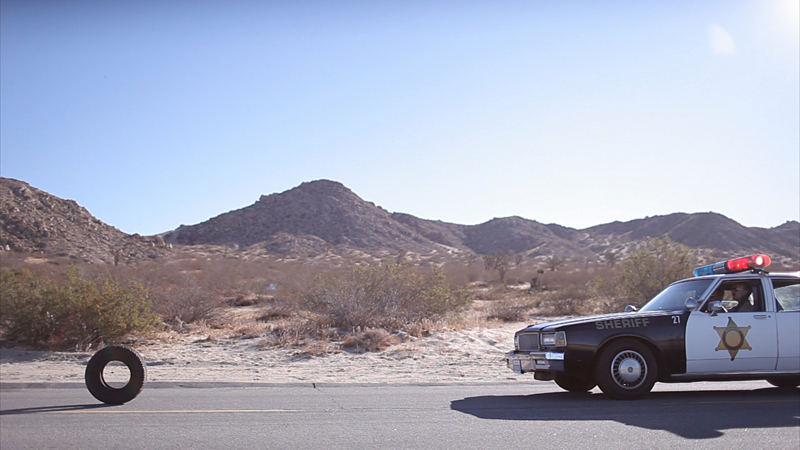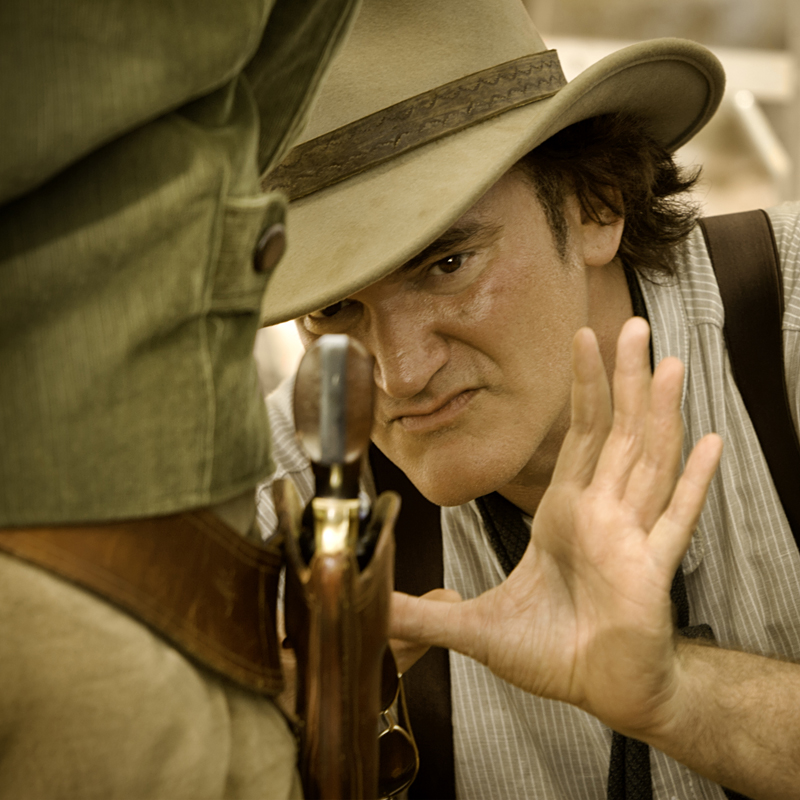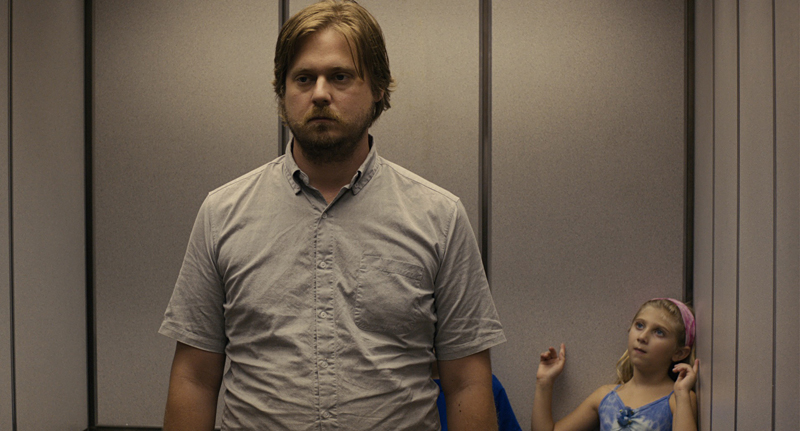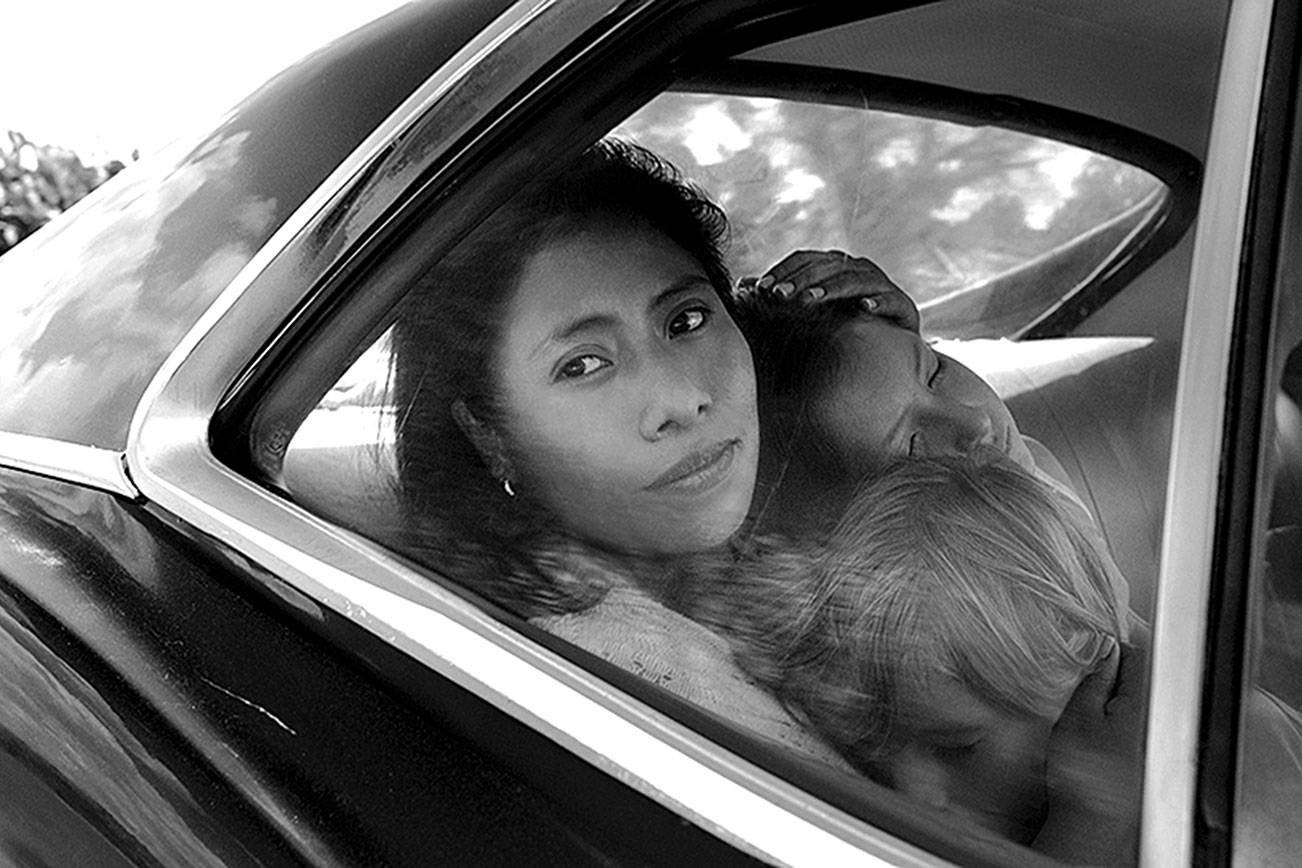Written and directed by Quentin Dupieux, Rubber follows the exploits of a tire (listed in the credits as “Robert”) that figures out how to control its own motion and then rolls through the desert on a killing spree, blowing shit up with its mind. Rubber‘s methods of address make it far more complicated than we could expect any semi-spoofy, quasi-horror film about a murderous inanimate object with psychokinetic powers to be. The film never attempts to explain how Robert got this power or how it works; where a more conventional sci-fi film would dedicate itself to first revealing the source of this threat and then quashing it, Rubber, with its distinctly post-apocalyptic vibe, dedicates itself to the suggestion that any explanation would be irrelevant. The tire’s bloody journey is presented through a framing device: An audience of about a dozen tourists watch Robert’s adventures from afar through binoculars. Slowly closing the space between the viewers and the “actors” until they’re part of the same drama, Dupieux mounts a critique of passive audiences that’s also sympathetic to the way they’re made to suffer. The voyeurs get what’s coming to them—but Dupieux’s final images confirm that Hollywood is his real target. An essay on storytelling and spectatorship within When-Inanimate-Objects-Attack schlock—one infused with the haunting aura and disillusionment of a post–Easy Rider road movie—Rubber is some kind of miracle.
Rubber: Without Car or Driver, Tire Goes on Killing Spree








